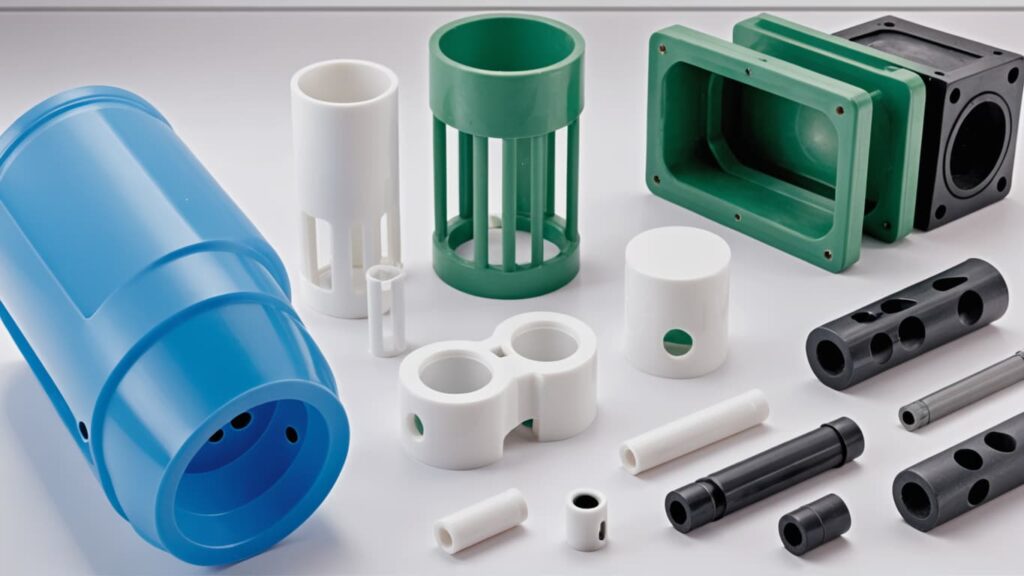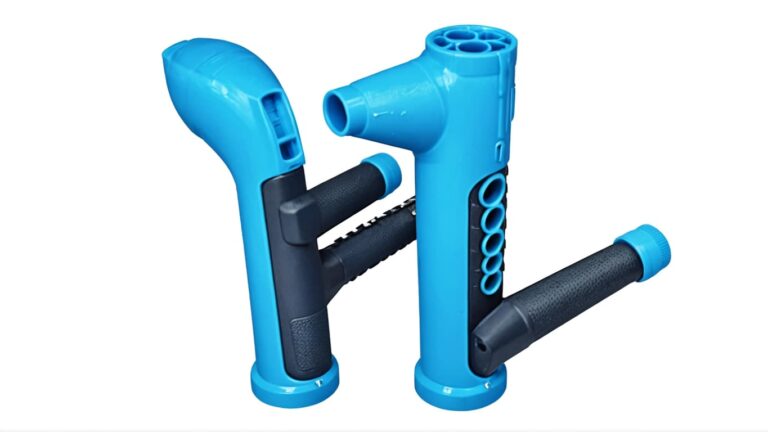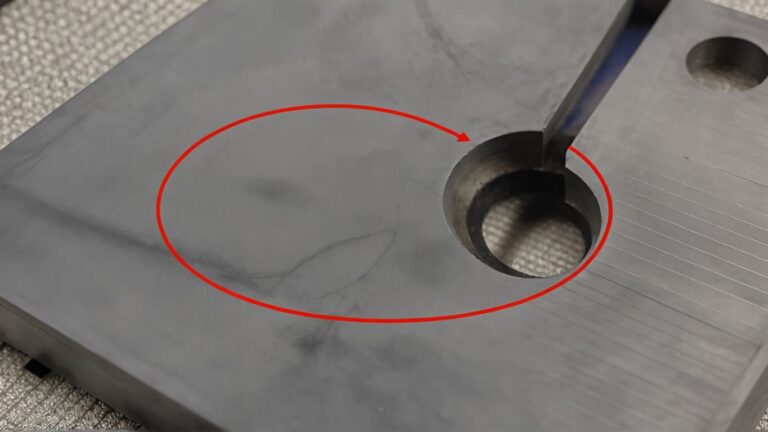Acrylonitrile Butadiene Styrene (ABS) is a widely used thermoplastic polymer known for its strength, toughness, and impact resistance. It is commonly used in injection molding due to its excellent processability and balanced mechanical properties. ABS is composed of three monomers: acrylonitrile, butadiene, and styrene, each contributing specific characteristics such as chemical resistance, flexibility, and rigidity.
The key characteristics that make ABS suitable for molding include:
- High impact resistance – Ideal for durable consumer and industrial products.
- Good dimensional stability – Ensures precision in molded parts.
- Excellent surface finish – Allows for aesthetic applications.
- Ease of processing – Ensures efficient injection molding with minimal defects.
ABS plastic has been a staple in manufacturing since its development in the 1940s. Over the decades, it has evolved through chemical enhancements to improve its toughness, heat resistance, and moldability, making it a preferred material in automotive, electronics, and consumer goods industries.
The ABS injection molding process follows a series of critical steps to ensure quality production:
- Material Preparation – ABS pellets must be dried before processing. The water content in ABS plastic is not conducive to plastic processing, as excessive moisture can lead to surface defects and weakened mechanical properties. To prevent this, ABS should be baked at 70-80℃ for 2-4 hours before molding.
- Injection Process – The dried ABS material is heated to a melt temperature of 200-250℃ and injected into a mold under high pressure.
- Cooling and Solidification – The molten ABS cools within the mold, taking the desired shape.
- Ejection and Finishing – The solidified part is ejected, and any excess material or defects are addressed through post-processing.
The roles of temperature, pressure, and time are crucial in maintaining consistency and quality:
- Temperature – Affects material flow and adhesion within the mold.
- Pressure – Ensures complete mold filling and prevents voids or shrinkage.
- Time – Proper cycle times allow for effective cooling without deformation.
Mold design plays a significant role in ABS injection molding. Factors such as gate placement, venting, and draft angles directly impact product quality and ease of demolding.
Despite its versatility, ABS injection molding presents several challenges:
| Common Issues | Causes | Solutions |
|---|---|---|
| Warping | Uneven cooling or internal stresses | Use uniform wall thickness, optimize cooling rates |
| Shrinkage | Poor mold design or inadequate pressure | Increase packing pressure, redesign mold |
| Surface Defects (e.g., bubbles, flow marks) | Moisture contamination, improper processing conditions | Pre-dry ABS pellets, optimize injection speed and temperature |
To mitigate these problems, manufacturers should:
- Ensure proper drying of ABS pellets before molding.
- Use optimal processing parameters for temperature and pressure.
- Implement rigorous quality control measures, including dimensional inspections and stress testing.
By addressing these challenges, manufacturers can enhance the efficiency and reliability of ABS injection molding processes, ensuring high-quality end products.
Acrylonitrile Butadiene Styrene (ABS) is a widely used thermoplastic polymer known for its excellent balance of mechanical, thermal, and chemical properties. It has a high tensile strength, making it a durable choice for various industrial applications. Additionally, ABS exhibits good thermal stability, with a melting point of approximately 200-250°C, which allows it to withstand moderate heat conditions. Chemically, ABS is resistant to acids, alkalis, and most oils, making it suitable for environments where exposure to chemicals is a concern.
One of the standout features of ABS is its impact resistance and durability. The butadiene component in ABS provides enhanced toughness, allowing it to absorb shocks and resist breakage. This makes ABS an ideal material for applications that require resilience, such as automotive parts, protective gear, and consumer electronics. Research has shown that ABS offers superior impact strength compared to polystyrene and acrylic, making it a preferred choice in industries that demand durability.
When comparing ABS with other common plastics used in manufacturing, such as polycarbonate (PC) and polyethylene (PE), ABS stands out due to its balance of cost, strength, and ease of processing. While polycarbonate provides higher impact resistance, it is significantly more expensive. On the other hand, polyethylene is cheaper but lacks the rigidity and heat resistance of ABS. This makes ABS a versatile and cost-effective option for numerous applications.
ABS plastic offers several advantages when used in injection molding. One of its primary benefits is its combination of strength, lightweight nature, and recyclability. With a density of approximately 1.04 g/cm³, ABS is relatively light, making it suitable for applications where weight reduction is essential, such as automotive and aerospace components. Additionally, ABS is recyclable, which contributes to sustainability efforts in industries looking to reduce plastic waste.
Another major advantage of ABS in injection molding is its cost-effectiveness and efficiency in the molding process. ABS has a low melting point compared to other engineering plastics, which reduces energy consumption during processing. Furthermore, ABS exhibits excellent flow characteristics when melted, allowing for precise molding with minimal defects. According to industry data, the cycle time for ABS molding is shorter than that of polycarbonate, leading to increased production efficiency and lower manufacturing costs.
The flexibility in design and application is another reason ABS is widely used. It can be easily colored, painted, or electroplated, making it suitable for aesthetic applications in consumer products. Additionally, ABS can be modified with additives to enhance specific properties, such as UV resistance or flame retardancy. This adaptability makes ABS an ideal material for products ranging from household appliances to medical devices.
Despite its many advantages, ABS plastic has some limitations and concerns that must be considered. One of the primary drawbacks of ABS is its relatively low resistance to UV radiation. Prolonged exposure to sunlight can cause ABS to degrade, leading to discoloration and reduced mechanical strength. This limits its use in outdoor applications unless treated with UV stabilizers.
There are also situations where ABS may not be the best choice. For example, ABS has moderate heat resistance but cannot withstand extremely high temperatures. If exposed to temperatures above 100°C for prolonged periods, ABS may begin to deform or lose its structural integrity. This makes it unsuitable for applications requiring high thermal stability, such as cookware or engine components.
Environmental considerations and sustainability issues also pose challenges for ABS usage. While ABS is recyclable, it is derived from petroleum-based raw materials, making it non-biodegradable. This raises concerns about its environmental impact, particularly in industries focused on eco-friendly alternatives. Additionally, during manufacturing, ABS releases volatile organic compounds (VOCs), which can contribute to air pollution if not properly managed.
Another important factor to note is the necessity of drying ABS before processing. ABS has a tendency to absorb moisture from the air, which can negatively affect its molding performance. If ABS contains excess moisture, it can lead to surface defects such as bubbles, splay marks, and reduced mechanical properties. To prevent this, ABS must be baked at a temperature of 70-80°C for 2-4 hours before injection molding. Proper drying ensures optimal product quality and longevity, making it a crucial step in ABS processing.
In conclusion, ABS plastic is a highly versatile material with numerous benefits and applications. However, understanding its limitations and processing requirements is essential for maximizing its performance and ensuring its sustainability in various industries.
Acrylonitrile Butadiene Styrene (ABS) plastic is widely used across multiple industries due to its excellent impact resistance, toughness, and ease of processing. Major sectors leveraging ABS injection molding include the automotive, electronics, and consumer products industries. In the automotive sector, ABS is a preferred material for manufacturing dashboards, trims, and protective casings due to its lightweight and durable properties. The electronics industry extensively uses ABS for laptop casings, remote controls, and protective housings for electrical components due to its good insulating properties. Additionally, consumer products such as luggage, kitchen appliances, and toys frequently incorporate ABS for its high strength and aesthetic versatility.
Several case studies highlight the success of ABS applications. For instance, LEGO bricks are a prime example of ABS plastic’s durability and precision in manufacturing. In the automotive industry, manufacturers like BMW and Toyota use ABS in interior components to enhance durability while reducing vehicle weight.
Looking ahead, future trends indicate a growing reliance on ABS in 3D printing, sustainable product development, and high-performance composites. With advancements in recycling technologies, ABS is being repurposed into more eco-friendly applications, reducing industrial waste and improving sustainability.
ABS plastic is found in a wide range of everyday products. Common items manufactured through ABS injection molding include computer keyboards, power tool housings, protective headgear, and vacuum cleaner bodies. The material’s high impact resistance and ease of molding make it ideal for both industrial and consumer applications.
Innovations in ABS-based products are driving new developments. For example, 3D-printed ABS components are increasingly used in prototyping across industries, including aerospace and medical devices. Additionally, ABS is a critical material in smart home devices, where durability and aesthetic appeal are essential.
The role of ABS in emerging technologies is expanding, particularly in autonomous vehicles and robotics. Its lightweight nature and excellent machinability make it a preferred choice for sensor housings and drone casings, where weight reduction and durability are crucial factors.
ABS can be tailored to meet specific application needs by modifying its composition. For example, adding glass fibers improves strength, while flame-retardant additives enhance safety for electrical applications. Additionally, UV stabilizers can be incorporated to improve outdoor weather resistance.
Different grades of ABS are available for specialized uses. The following table outlines some common ABS grades and their primary applications:
| ABS Grade | Characteristics | Common Applications |
|---|---|---|
| General Purpose | High impact resistance, smooth finish | Consumer electronics, toys |
| Flame Retardant | Enhanced fire resistance | Electrical housings, automotive interiors |
| High Heat | Better thermal stability | Automotive components, appliances |
| Glass-Filled | Increased strength and rigidity | Industrial equipment, enclosures |
However, customizing ABS for unique applications presents challenges, such as moisture absorption, which can negatively affect the plastic’s properties during processing. To prevent this, ABS must be properly dried before injection molding. The recommended drying conditions are 70-80℃ for 2-4 hours, ensuring optimal material performance. Neglecting this process can lead to surface defects, reduced impact strength, and poor adhesion in finished products.
By addressing these challenges through precise formulation adjustments, manufacturers can further expand ABS’s potential across industries, making it a more versatile and reliable material for future innovations.
Effective mold design is crucial for ensuring the quality and performance of ABS injection molded parts. Key considerations include designing for uniform wall thickness to prevent warping, incorporating sufficient draft angles to ease part ejection, and using proper gate placements to minimize stress concentration.
To minimize defects such as sink marks, warping, and voids, designers should optimize gate locations, cooling rates, and injection speeds. Additionally, reinforcing ribs should be strategically placed to enhance structural integrity without increasing material usage.
Prototyping plays a vital role in the design phase, allowing manufacturers to test and refine their designs before full-scale production. Techniques such as 3D printing and CNC machining can help validate part geometry, identify potential defects, and optimize mold configurations before investing in expensive tooling.
Proper temperature and moisture control are critical in ABS injection molding. ABS plastic is hygroscopic, meaning it readily absorbs moisture from the environment. Excess moisture in the material can lead to surface defects, poor mechanical properties, and increased reject rates. Therefore, drying ABS before processing is essential. The recommended drying temperature for ABS is 70-80°C, with a drying time of 2-4 hours, depending on humidity levels. Studies have shown that inadequate drying can result in up to a 30% reduction in tensile strength and a significant increase in cosmetic defects.
Optimal injection settings include a barrel temperature range of 200-250°C, an injection pressure of 60-150 MPa, and a mold temperature of 40-80°C. These settings ensure proper material flow, minimize internal stresses, and improve part quality.
To enhance the quality of molded ABS products, techniques such as controlled cooling, sequential valve gating, and gas-assisted molding can be employed. Using precision mold temperature control systems helps maintain consistent part dimensions and reduces cycle times, leading to improved efficiency and lower production costs.
Regular maintenance of injection molding machines is essential for ensuring consistent production quality and preventing costly downtime. Common maintenance practices include routine cleaning of the mold, lubrication of moving components, and checking hydraulic and electrical systems for wear or leaks.
Troubleshooting common molding issues such as short shots, flash, and burn marks requires a systematic approach. Adjusting injection speed, pressure, and temperature settings can help resolve these defects. For example, increasing the mold temperature can reduce weld lines, while optimizing venting can eliminate gas traps that cause burn marks.
Continuous monitoring and adjustment during production are crucial for maintaining optimal process conditions. Implementing real-time quality control systems and automation technologies can help detect deviations early, reducing defect rates and improving overall production efficiency.
When requesting a quote for ABS injection molding services, it’s essential to provide key information such as part design specifications, material requirements, expected production volume, and any special finishing or post-processing needs. Clear and detailed input ensures accurate pricing and minimizes potential misunderstandings.
Understanding pricing structures is crucial, as ABS injection molding costs are influenced by factors such as mold complexity, material costs, production batch size, and cycle time. According to industry data, mold fabrication can account for 30-50% of initial costs, while material expenses vary based on ABS quality and additives.
To make an informed decision, compare quotes by evaluating factors beyond price, such as lead time, quality assurance policies, and after-sales support. A study in the manufacturing sector suggests that selecting a supplier solely based on cost can lead to increased defects and production delays, making a holistic evaluation necessary.
Selecting a reliable ABS injection molding supplier requires assessing their experience, certifications, and production capabilities. A trustworthy partner should have ISO 9001 certification, a strong track record in ABS molding, and advanced equipment to ensure consistency in production.
Evaluating supplier capabilities involves reviewing case studies, visiting facilities when possible, and checking their ability to handle complex geometries and tight tolerances. A supplier with extensive experience in ABS molding is more likely to deliver high-quality, defect-free parts.
Effective communication and support play a critical role in successful manufacturing. Studies have shown that poor communication is a leading cause of project delays in manufacturing. Establishing clear communication channels and ensuring responsive technical support can significantly improve project outcomes.
Managing supply chain challenges in ABS injection molding requires careful planning, supplier diversification, and risk assessment. Disruptions in raw material availability can cause production delays, making it essential to work with multiple ABS material suppliers to mitigate risks.
Sourcing high-quality ABS materials is key to achieving strong, durable molded parts. It’s advisable to select materials from reputable suppliers that provide consistent quality and comply with industry standards. Additionally, drying ABS before processing is essential, as moisture content can negatively impact plastic properties. Based on research, ABS should be baked at 70-80℃ for 2-4 hours to remove excess moisture, ensuring optimal surface finish and mechanical strength.
Building long-term relationships with suppliers fosters reliability and consistency in material sourcing. Establishing strategic partnerships ensures priority access to materials during shortages and can lead to cost benefits through bulk purchasing agreements.



